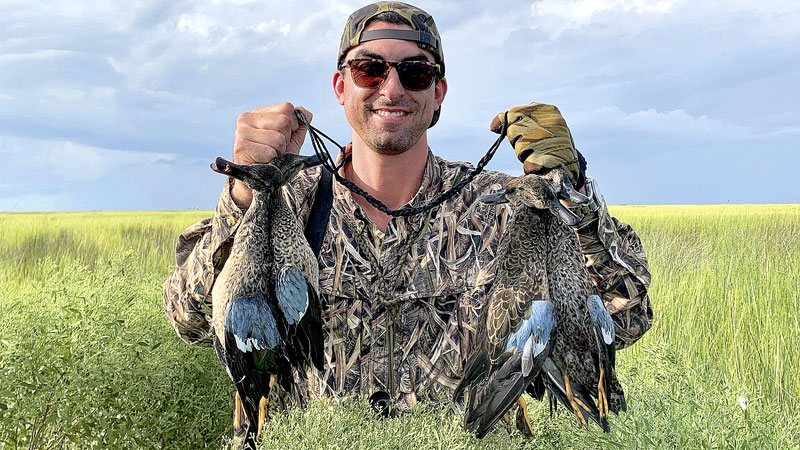
Teal season is on the horizon for Louisiana hunters; here are some tips for getting more of the fast, little ducks in your sights and on your duck straps.
After a spring and summer of so much being taken away from us, we’re overdue for something to count on. Despite ongoing restrictions in much of our daily lives for the foreseeable future, the show must go on.
Take, for example, the forefront of the 2020 fall waterfowl migration is already underway, as flights of sporty blue-winged teal make their annual trek, quarantine be darned.
Thankfully, for as much as has been turned upside down in our lives this year, the approach to putting teal on the straps remains the same. Louisiana hunters have long proven they’re willing to brave the heat, bugs and snakes for the exhilarating experience that teal season can offer.
Location will be key, as all of the best equipment and calling will not make birds appear out of nowhere. From rice fields to shallow marshes, identifying areas birds will be using can go an awfully long way in ensuring a hot barrel on opening morning Sept. 12.
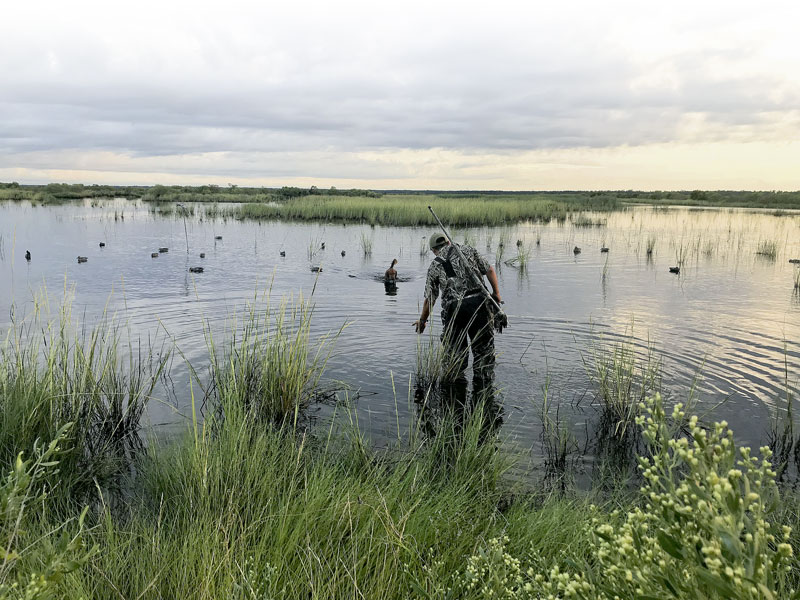
Go shallow
Above all things, shallow is the critical feature. Given their small size, teal prefer the shallows for feeding on an assortment of seeds or invertebrates without having to dive in deeper waters. Erring toward the shallowest waters you’ve got access to will ensure you are setting up on preferred habitat.
One telltale sign to be followed when scouting is locating areas that various shorebirds are using before the teal show up. When they do show up, they’ll be found dabbling right in with the local wading birds. Seeing mottled ducks, wood ducks or whistling ducks using these waters can also be a great indicator of where the teal will take.
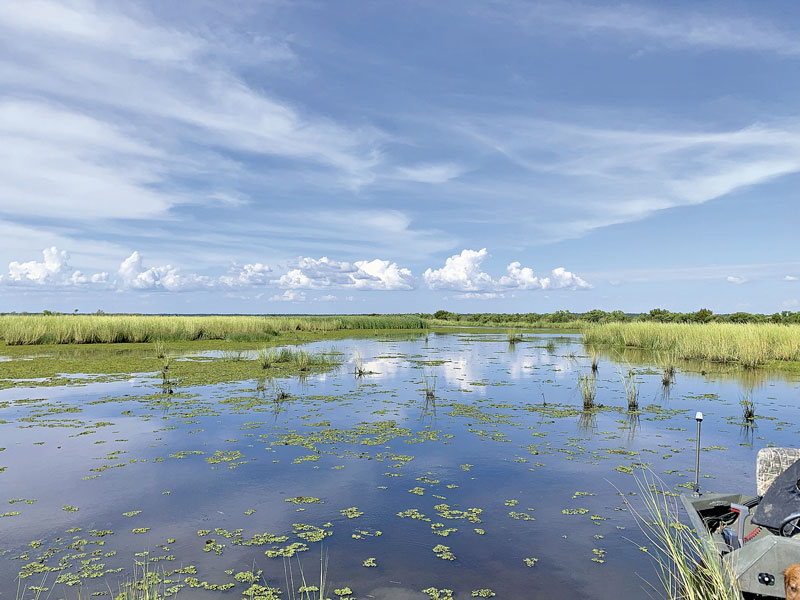
A final note: never be afraid to set up on an area that has all the indications of being a promising locale — but without confirmation of teal being there. A hole that has only mottleds and egrets one day has the potential to be a fast-shooting teal bonanza for the next morning’s opener. These birds are always on the move, so don’t be disheartened if you haven’t seen them while scouting promising habitat; you may well be pleasantly surprised the next morning.
Set-ups
There are a lot of schools of thought on decoy setups, and thankfully, these early birds leave a whole lot of room for variability — whatever you might have the most confidence in will probably work. One theme most early season teal hunters will agree upon, however, is use of motion decoys, specifically spinning-wing decoys. For whatever reason, these birds have proven that you can hunt over flamingo decoys so long as you’ve got the flash of a spinning wing decoy or two — or even more.
As you get later in the Sept. 12-27 season, you might find some birds not fully committing to the spinners after likely receiving an unpleasant education. Never be afraid to pull the spinners or simply turn them off via remote while birds are working in close. If they’re balking on the approach, don’t waste your morning hoping they’ll eventually give in.
When it comes to standard, floating decoys, teal success is often more of a game of long-range visibility over realism. In short, don’t get too concerned with only putting out hen decoys of various species in attempt to replicate early season eclipse plumage. Birds being unable to find your decoys is far more concerning than ensuring they don’t spook off of a colorful drake blue-wing decoy. In fact, many hunters are shunning today’s small, ultra-detailed teal decoys in favor of blocks of larger species, given the enhanced visibility.
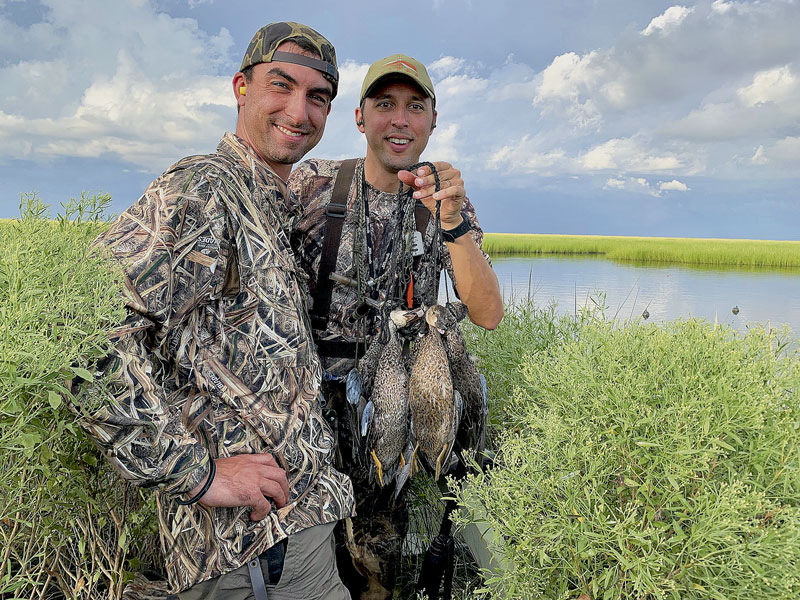
Calling
To help turn passing flights, calling is a critical tool. A number of call-makers are offering calls tuned to the higher-pitched quack of a teal, and birds are typically very responsive. When it comes to getting the attention of a passing flight, there’s no such thing as too loud. Just when you think you’re sounding ridiculous and there’s no chance of turning a distant flock, you might be surprised to see what getting even more raucous can do. Given these birds can be swayed elsewhere on a whim, it’s just as important to stay on the call until you’ve got them right over the spread.
Remember early teal season gear
With the season opening on Sept. 12, there are only a couple of weeks remaining to get your gear in order. A list of must-haves is below:
- Non-toxic shot in sizes ranging from No. 3 to No. 6 paired with an open choke such as Improved cylinder or skeet;
- Headlamp;
- Therma-Cell and/or fogger spray; they work great in tandem.;
- Bug repellent;
- Lightweight, breathable camo;
- State licenses and federal waterfowl stamp;
- Water bottle;
- Teal calls;
- Spinning wing decoys;
- Camo hat.
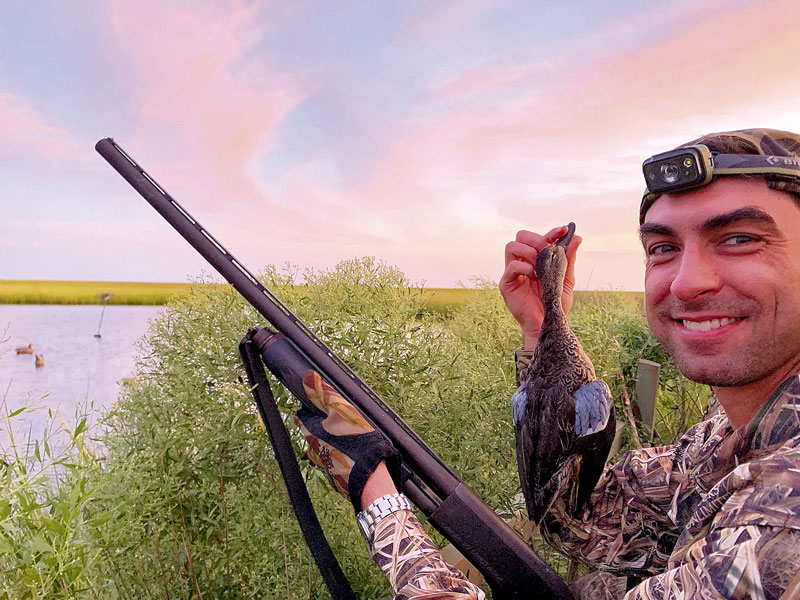
A headlamp and light, breathable camouflage clothing are must items for Louisiana’s early teal season. (Photo by Darren Digby)
Get hip
Louisiana waterfowlers should note that the required HIP survey can now only be obtained via LDWF’s website https://www.wlf.louisiana.gov/page/mandatory-harvest-information-program or in-person at LDWF headquarters in Baton Rouge; it is no longer available at your local retailer.


